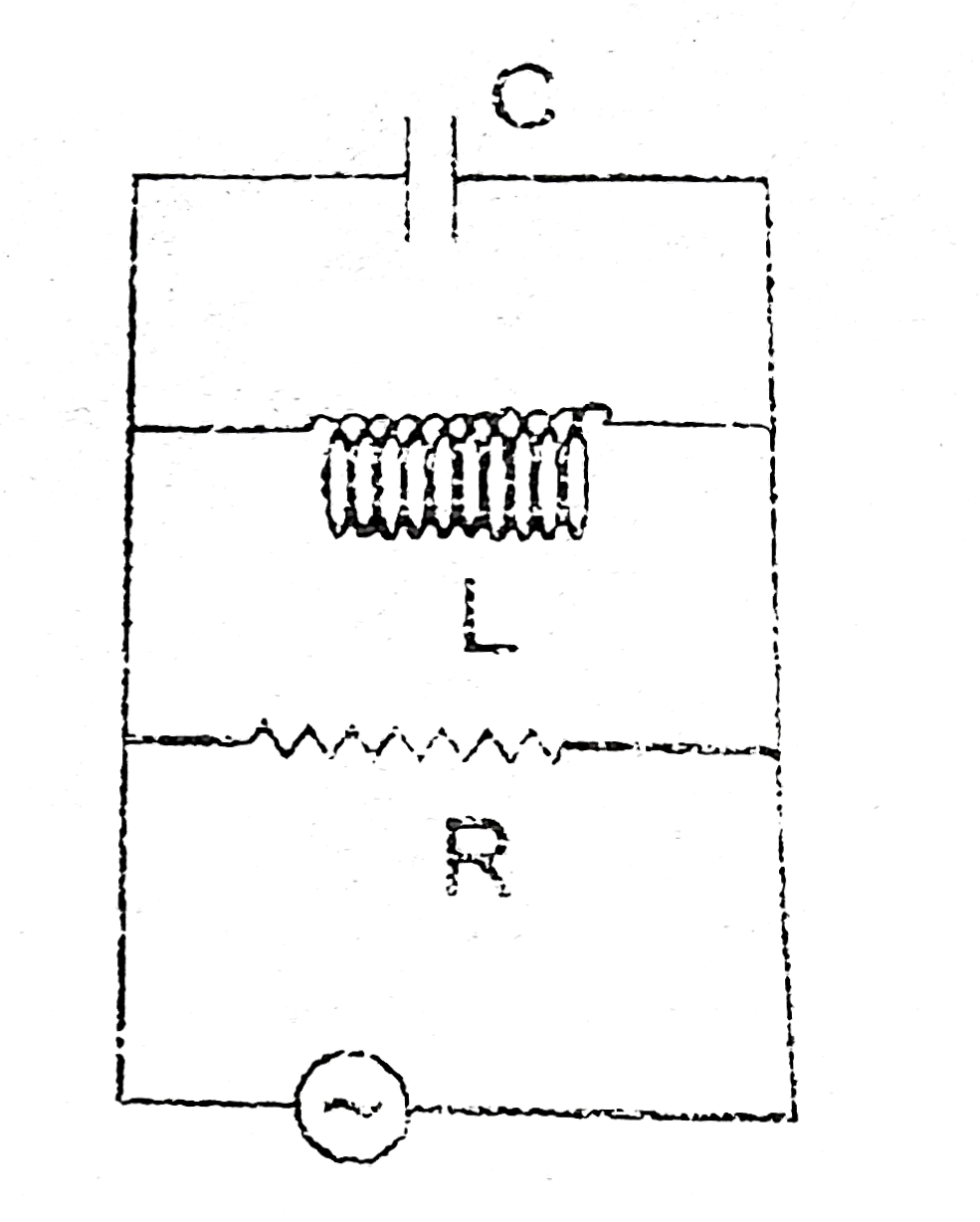The capacitive reactance in an A.C. circuit is
effective resistance due to capacitor
effective wattage
effective voltage
none of the above
The correct Answer is:A
To solve the question regarding the capacitive reactance in an A.C. circuit, we will follow these steps:
1. Understanding the Concept:
Capacitive reactance (Xc) is a measure of how much a capacitor resists the flow of alternating current (A.C.). It is an important concept in A.C. circuits.
2. Formula for Capacitive Reactance:
The formula for capacitive reactance is given by:
Xc=1ωC
where:
- Xc is the capacitive reactance,
- ω is the angular frequency of the A.C. source, and
- C is the capacitance of the capacitor.
3. Understanding Angular Frequency:
Angular frequency (ω) is related to the frequency (f) of the A.C. source by the equation:
ω=2πf
This means that as the frequency increases, the angular frequency also increases.
4. Analyzing the Effect of Capacitance:
From the formula Xc=1ωC, we can see that:
- If the capacitance C increases, the capacitive reactance Xc decreases.
- If the angular frequency ω increases, the capacitive reactance Xc also decreases.
5. Conclusion:
The capacitive reactance in an A.C. circuit effectively restrains the flow of current depending on the values of capacitance and frequency. Therefore, it is a crucial factor in determining how capacitors behave in A.C. circuits.
Final Answer:
The capacitive reactance in an A.C. circuit is given by the formula Xc=1ωC.
Capacitive reactance (Xc) is a measure of how much a capacitor resists the flow of alternating current (A.C.). It is an important concept in A.C. circuits.
The formula for capacitive reactance is given by:
Xc=1ωC
where:
- Xc is the capacitive reactance,
- ω is the angular frequency of the A.C. source, and
- C is the capacitance of the capacitor.
Angular frequency (ω) is related to the frequency (f) of the A.C. source by the equation:
ω=2πf
This means that as the frequency increases, the angular frequency also increases.
From the formula Xc=1ωC, we can see that:
- If the capacitance C increases, the capacitive reactance Xc decreases.
- If the angular frequency ω increases, the capacitive reactance Xc also decreases.
The capacitive reactance in an A.C. circuit effectively restrains the flow of current depending on the values of capacitance and frequency. Therefore, it is a crucial factor in determining how capacitors behave in A.C. circuits.
The capacitive reactance in an A.C. circuit is given by the formula Xc=1ωC.
Similar Questions
Knowledge Check
Assertion : The capacitive reactance limits the amplitude of the current in a purely capacitive circuit.
Reason : Capacitive reactance is proportional to the frequency and the capacitance.AIf both assertion ans reason are true ans reaason is the correct explanation of assertion.BIf both assertion and reason are true but reason is not the correct explanation of assertion.CIf assertion istrue but reason is false.DIf both assertion and reason are false.
Can a capacitor of suitable capacitance be used in an AC circuit in place of the choke coil ?
View SolutionWhat is the impedance of a capacitor of capacitance C in an ac circuit using source of frequency in Hz?
View SolutionThe average power dissipation in a pure capacitance in AC circuit is
View SolutionThe capacitance of a pure capacitance is 1 farad. In DC circuits, its effective resistance will be
View SolutionIf for above circuit the capacitive reactance is two times of inductive Reactance, and resistance R is equal to inductance Reactance then power factor of circuit is .

View SolutionA choke coil is connected to an AC source. Some power is dissipated in coil. Now a capacitor is connected in series with the coil and source is same, then average power dissipated in the circuit does not changes. If ratio of inductive reactance of coil and capacitive reactance of capacitor is1x then find x
View SolutionAssertion: Inductive reactance of an inductor in DC circuit is zero.
Reason: Angular frequency of DC circuit is zero.
View Solution
